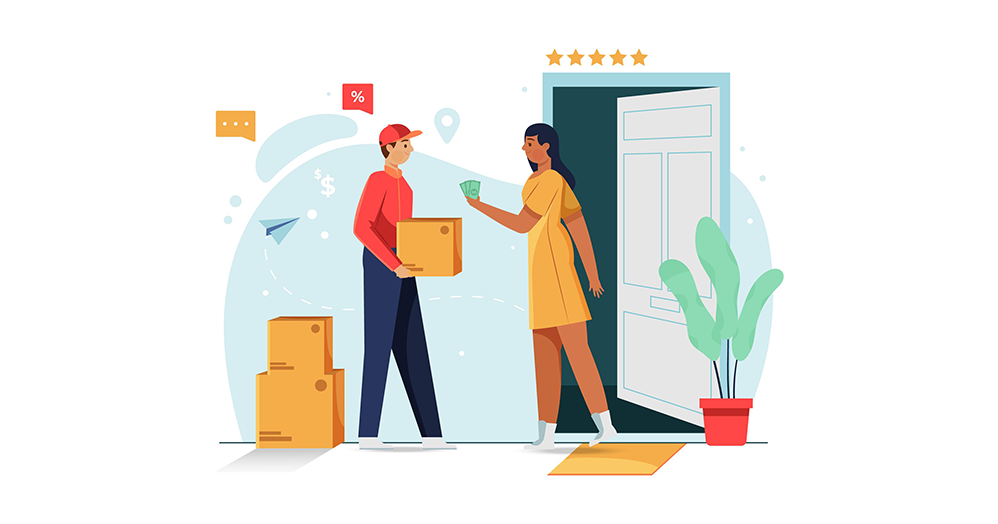Understanding E-Commerce Fulfillment

“You must be very patient, very persistent. The world isn’t going to shower gold coins on you just because you have a good idea. You’re going to have to work like crazy to bring that idea to the attention of people. They’re not going to buy it unless they know about it.” Herb Kelleher, Founder of Southwest Airlines
Herb was not far from the truth when he spoke these words of wisdom. And what is good for the airlines industry is just as good for e-commerce companies as well. We begin with a great idea for our e-store like Amazon, Flipkart or Shopify. Agreed. But how do we integrate logistics on our own? There are many facets to fulfilling our customer’s product requirements. And when product fulfilment is impacted, sales will plummet.
So what is E-Commerce Fulfilment?
Everything begins with an order, like a novel, vacuum cleaner, or stationery. Once a customer places an online order, the following steps are necessary to fulfill the order:
⇒Receiving inventory shipments
⇒Inventory storage
⇒Order processing (Pick and Pack)
⇒Shipping
⇒Returns processing
Let’s take a look at the components of a fulfilment cycle.
Warehousing
We need a place to store products coming from suppliers. A warehouse is a point of transit where products are stored, packaged, labeled with the e-store name, and sent to the customer’s location. Products should be stacked based on weight, volume, durability, and accessibility; FIFO (first in first out) LIFO (last in first out), etc.
Depending upon the nature of our online business, we may be happy with one warehouse location, or several, in a given geography.
Managing Inventory
We need to list all the products stored in a warehouse, logically and practically. There should always be the latest information on the availability of stocks and those running out. And importantly, correct counting is done, for the entire stock. A rugged inventory management software is imperative to run a warehouse efficiently.
Managing Orders
Incoming orders are the core of any business. We have to process all orders received into our system, quickly, efficiently, and correctly. We can never ignore customer orders. When we say processing, we refer to aligning the order to the inventory and ensuring that the correct item is being shipped out, and tracking enabled.
Picking Products & Packaging
No supplier in the world can issue any product that we ask for. There are specialist suppliers for sports goods, stationery, garments, perfumes, electronic items, medicines, and so on. A product has to be thus picked from its location. Then correctly packaged (with the e-commerce store name and logo), to ensure efficient shipping.
Shipping
Once a product is appropriately packaged and labeled, the delivery team has to make arrangements to arrange the transport or call for a courier’s vehicle. This team has to ensure that the first mile and last mile in the shipping cycle are efficiently and timely managed.
Managing Returns & Rejections
It’s quite common for a customer to return a product, either because it doesn’t conform to requirements. Or damaged, or defective. The inventory application must register this entry, as also the physical arrival of the goods to the warehouse. This is called reverse logistics.
E-Commerce Fulfillment Models
There are such important models, we can shift to:
♦ Self-Fulfillment
♦ 3PL Fulfillment
♦ Drop shipping
Let’s understand the pros and cons of these fulfillment options.
Self Fulfillment
With the Self Fulfillment model, the e-commerce store manages all the fulfillment operations at its premises, such as orders, warehouse, inventory, packaging, and shipping, and even returned goods. While it has the advantage of being self-sufficient, it does not look like a sustainable model, down the line. When orders increase, there will be requirements for larger warehouses, more locations, more staff, and processes. It might work for specialist e-commerce stores like florists, cake shops, and so on. But either the growth will be stunted, and subject to competition. Or messy, when stores get overwhelmed by the deluge of orders.
3Pl Fufillment
3PL Fulfillment fills the void. These are an integrated solution where a store need not worry about the logistics of managing an order to the point of its delivery. All the hassles of day-to-day logistics will be handled by these professionals. You can shift your gears from small to medium and large very easily. These fulfillment centres have access to several suppliers of the same product and can arrange for goods far more easily. They have also the advantage of flexible (and specialized like cold storage, temperature-controlled, etc.) warehouses, that can shrink or grow, corresponding to requirements. The staff is trained in all aspects of logistics.
Drop shipping
With the drop shipping model, the supplier directly ships the product to the end customer. The e-store never holds inventory at any given time. Orders and shipments are tracked through a fulfillment application. This is not a recommended model for sustained growth
Reach Us At
Corporate Address
5th Floor, Vijay 66 North, Jubilee Enclave, HITEC City,Hyderabad, Telangana 500081
About Company
© 2024 Shift Logistics Private Limited all rights reserved